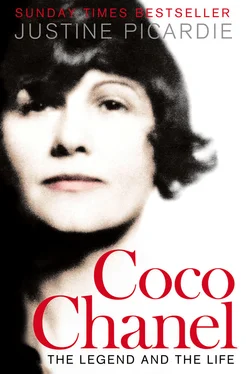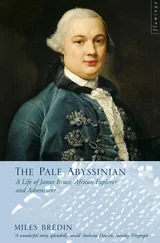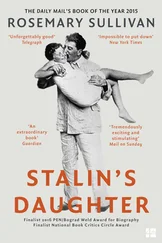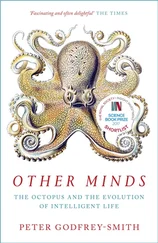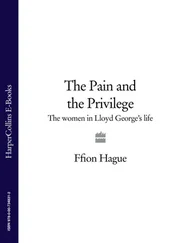Fashion is often deemed facile – and indeed, there are moments when it does make itself look ridiculous – yet Gabrielle Chanel brought dignity to her conception of style, while also reminding us that beautiful surfaces may have hidden depths. She herself kept so much of her past concealed – the shame of her childhood abandonment; the pain of her years spent in an orphanage; the agony of lost loves and loneliness. She became the most famous woman in fashion – whose iconography remains as potent today as it was a century ago – but for all her elegance, she remained vulnerable, despite the protective qualities of her perfectly tailored clothes.
It took me some time to feel brave enough to embark on a book about this complex and brilliant woman, although I wrote often about her, and her enduring legacy, in the years after my first visit to Rue Cambon. When I thought about Chanel – which was often, given that I worked for Vogue after my sister’s death; and subsequently for Harper’s Bazaar – I could not disentangle my feelings about its present incarnation, as a supremely powerful global fashion brand, from my instinctive emotional response to Gabrielle Chanel. She seemed to have everything, and nothing (though as I write those words, I am tempted to delete them, for fear of being misleading). Could it be that she was a tragic heroine, or someone else entirely, a more elusive figure than anyone could ever fully know?
But for all my doubts, I continued searching for clues about Chanel, making notes, slowly gathering the confidence to write her biography, acknowledging my own ambition in doing so. Doors began to open – to the Chanel archives in Paris, and a number of others elsewhere (including several private archives in England and Scotland containing previously unseen material dating back to Chanel’s love affair with the Duke of Westminster in the 1920s, and her friendship with Winston Churchill). I was also fortunate to meet two women who had been close to Chanel: firstly, her friend Claude Delay, an author and psychoanalyst (and therefore a perceptive interpreter of Chanel’s complex emotions, dreams and nightmares); and Gabrielle Labrunie, Chanel’s great-niece, who might in fact have been her granddaughter. Both women were exceptionally kind to me, and generous with their time and memories; indeed, Gabrielle Labrunie even allowed me to stay with her at her country house, outside Paris, while I was researching the book.
Their kindness may have had something to do with my own vulnerability when I first met them; for this coincided with the end of my marriage. My then husband, and the father of my two sons, had fallen in love with someone else; it was as simple, and as complicated, as that. In the chaotic, unhappy period following our separation, I travelled to Aubazine, a remote convent and Cistercian abbey, hidden away in the rural French region of Corrèze, where Chanel had lived with her two sisters in the wake of their mother’s death and their father’s disappearance. It was winter when I went there – and I had been reluctant to go, longing to remain within the familiar sanctuary of home, yet also knowing that the opportunity to visit Aubazine and stay in the convent might never arise again.
I still remember the journey – leaving London in tears, weighed down by anxiety and a corrosive sense of impending catastrophe; arriving in Paris, feeling as if I could not go on; catching another train to the town of Brive-la-Gaillarde, where Chanel’s mother had died; and then following the route that her father had taken her with her sisters, up through a circuitous mountain road towards Aubazine, where the grey stone walls of the ancient abbey looked more forbidding than I could ever have imagined. During Chanel’s residence there, in the late nineteenth century, the convent was filled with dozens of orphans and nuns; but by the time of my visit, the orphanage had been closed for decades, and the religious community had dwindled to a handful of nuns. The Mother Superior had agreed to my staying there, as long as I followed the daily routine of the nuns: prayers at dawn, noon, dusk, and night; silence except at meals; respect for their religious rituals and spiritual retreat.
It was a bitter winter that year, and my prevailing memory of those days – and long nights – at Aubazine is of the chill of the little room where I slept in a narrow iron bed, a wooden crucifix of an anguished Christ above me. The chapel where I knelt with the nuns as they prayed was equally icy; the stone floor cold as the black earth of the abbey’s garden, where the trees were leafless and the plants frostbitten and decaying. When I was alone at night, I alternated between weeping and writing; although eventually, my focus shifted away from my own dreary unhappiness, as I became more absorbed in the unfamiliar surroundings. In the short hours of daylight, between the nuns’ prayer services, I explored the abbey, and at last began to feel a profound sense of wonderment: not because of a sudden religious conversion, but rather because Chanel’s symbols – the interlocked double Cs that appeared in her designs; the restrained aesthetic of black, white and beige; the stars and crescent moons that were her signature in jewellery and other decorative embellishment – were also apparent in the ancient world of Aubazine. As I retraced Chanel’s steps along the corridor to the dormitory where she slept, I saw the mosaic of five-sided stars that had been crafted from thousands of tiny stones by the Cistercian monks who inhabited Aubazine during its medieval era; while inside the dark abbey itself were stained-glass windows with a stylised design that seemed to reflect – or pre-figure – Chanel’s logo. The nuns themselves still wore black habits with white cuffs and collars – again, reminiscent of Chanel’s ascetic monochrome palette – and their rosaries looked unexpectedly similar to her pearl necklaces and crucifixes.
By the time I left Aubazine, I had not experienced a miraculous recovery from the pain of the end of a marriage, but I did feel lucky: to have been allowed to stay at the abbey, and also to have been free to leave there, unlike the orphans who had been locked behind its iron gates. Before returning to Paris, I went to see Gabrielle Labrunie again and told her about my experience at Aubazine. And it was then that she led me to a simple bedroom in her house that I had never been inside before and showed me the wardrobe lined with Chanel’s own clothes; most of them in the colours of Aubazine (white silk and linen, like the whitewashed walls of the convent; beige tweed, reminiscent of the sandstone floors of the abbey; black chiffon, dark as the shadows that shrouded the chapel). And there, too, was a faint scent that I recognised from childhood – Chanel N°5 – the scent of a woman, still distinct today, in Gabrielle Chanel’s apartment …
Gabrielle Labrunie died several years ago, but as I sit here on a winter’s morning, the pale sunlight filtered by the translucent curtains, I remember her face and her gentle voice; her compassion and her understanding; the touch of her warm hand on mine. The hidden mirrored door to the apartment is closed, but I can hear the sound of voices, from the women who are working in the couture salon below, the day after Chanel’s latest show (this one held at the Ritz, with a light-hearted parade of dancing models, wearing black wisps of chiffon, lustrous pearls and soft tweeds). There is a ripple of laughter, and I find that I am smiling, too. Chanel’s clock on the desk has stopped – it is forever 5.38 (a time that seems to have no significance, though I could be wrong, in this place where numbers remain powerful). But I am aware of how much time has passed since I first came here, and all that I have discovered about myself – as well as Gabrielle Chanel – in the intervening years.
Читать дальше
